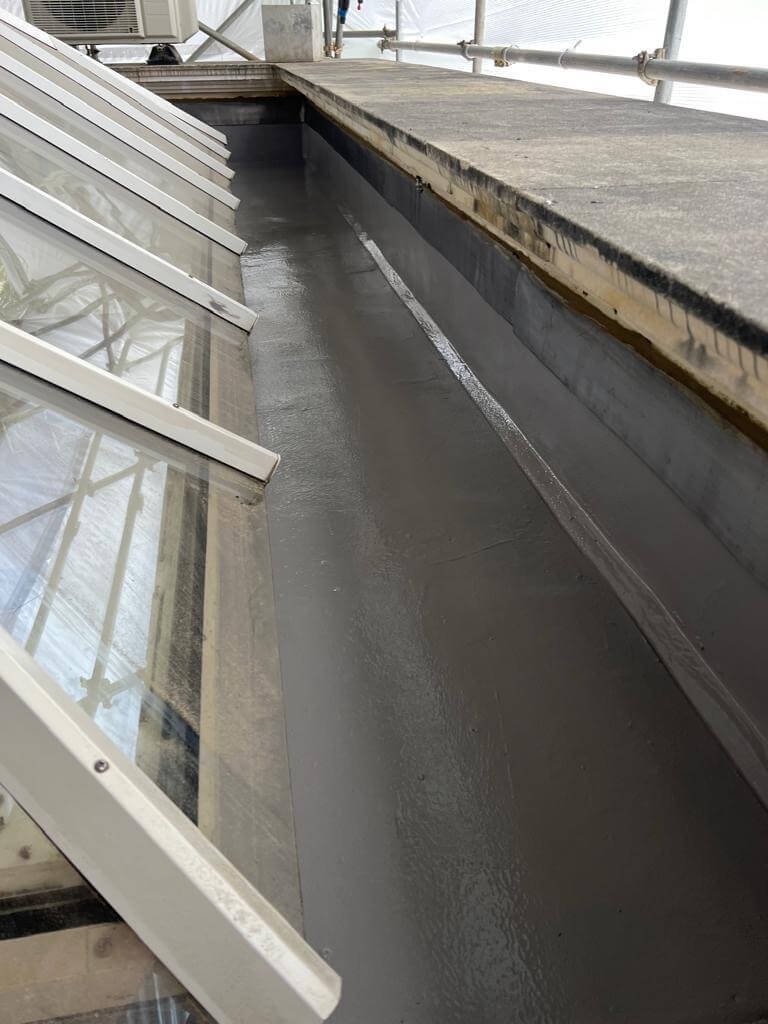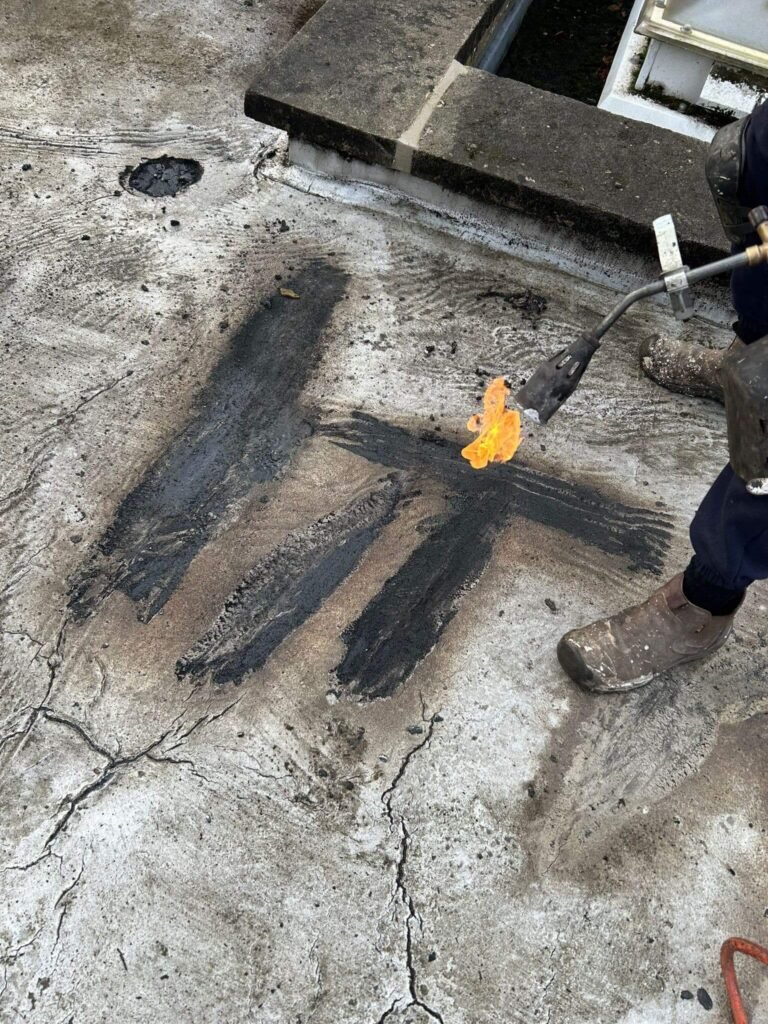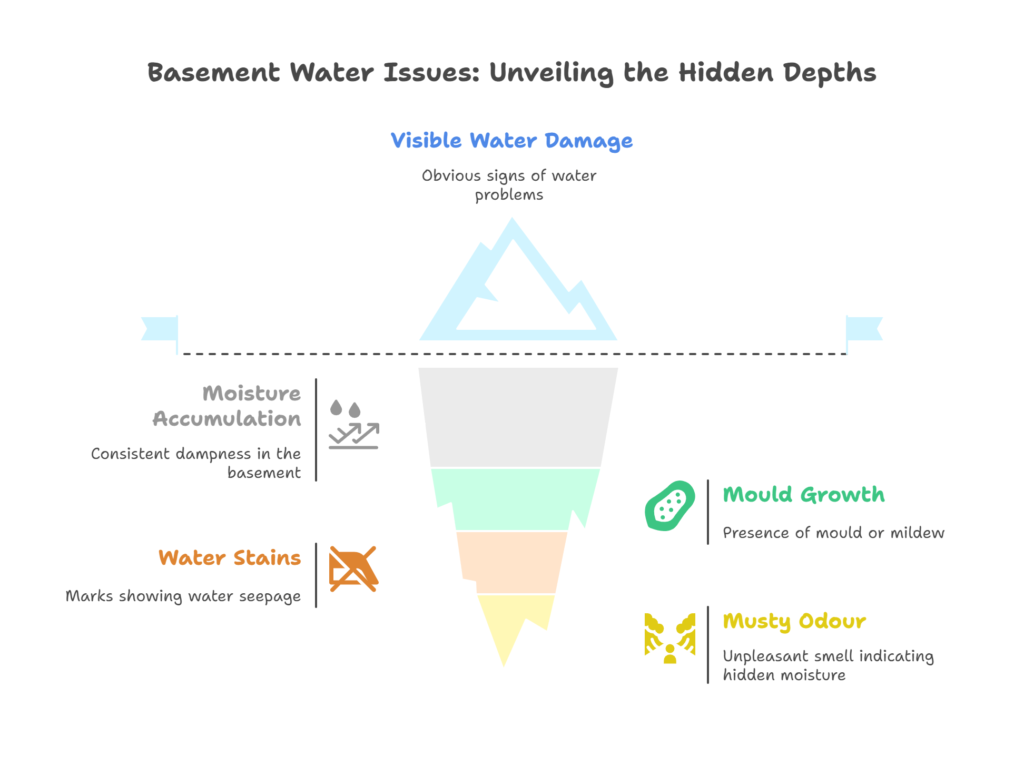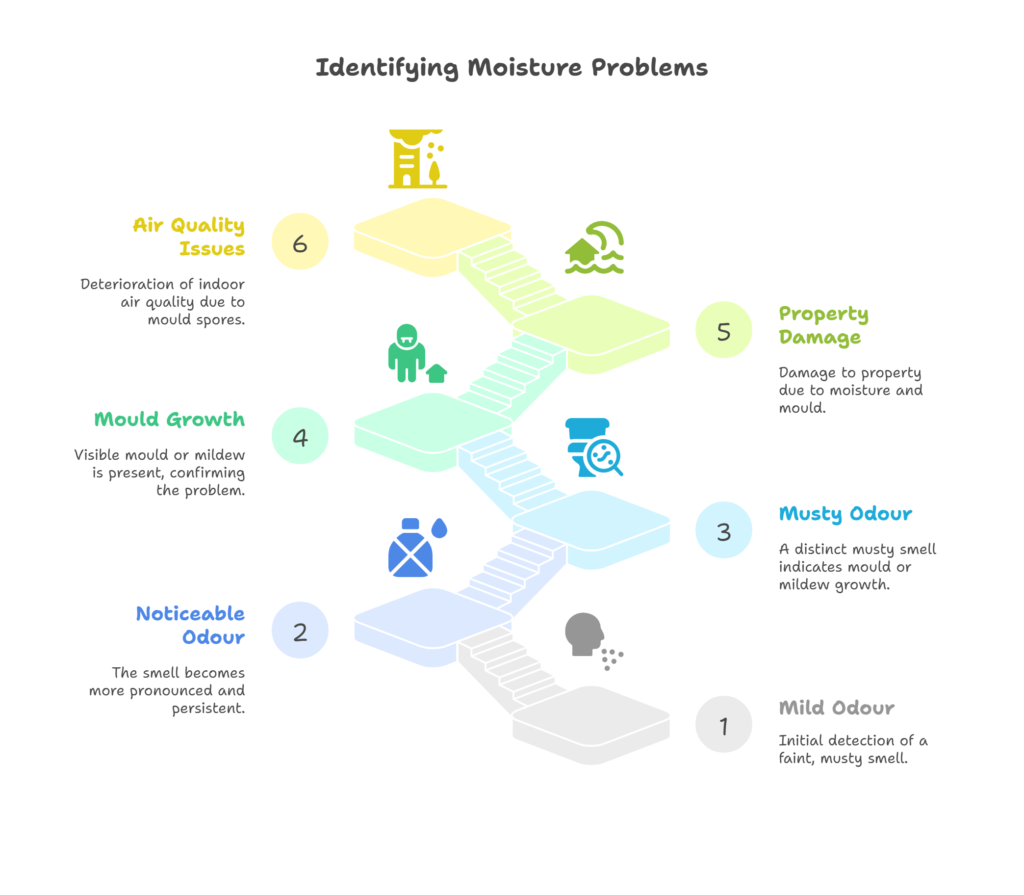
Contents
Our Services
Liquid waterproofing
What Client Say
I would just like to say a big thank you to the Denco team for the work they recently did on our roof, such a great finish. They repaired the old asphalt and covered it with a lovely new grey liquid coating. Leaving the premises very clean and tidy, we are so pleased with the end result. Thank you again guys.
Thank you to Lee and his colleagues from Denco Waterproofing for the outstanding job that they have completed on our balcony. Very impressed with there standard of workmanship and will definitely be having them back to replace the flat roof on our extension soon.
Great work by the Denco Waterproofing lads, very hard working, extremely tidy and the attention to detail was top class. Well done job all round. Many thanks.
Need help?
Don't hesitate to contact us
Send a message
Imagine walking into your basement after a heavy rainstorm and noticing that unmistakable musty smell. You look around and spot damp patches creeping up the walls or puddles forming on the floor.
Your heart sinks. You worry that your property is losing the fight against moisture. But don’t worry, you’re not alone, and there’s a solution at hand. Asphalt damp proofing could be your property’s knight in shining armour. Seeing the signs that your property needs protection can save you from many issues down the road.
You’ll discover the five key indicators that signal it’s time to take action, ensuring your home stays dry and safe. Don’t let moisture silently wreak havoc; learn how to protect your sanctuary today.
Common Damp Indicators
Asphalt damp proofing is crucial for maintaining the health of your property. Ignoring the signs of damp can lead to costly repairs and structural damage. Recognising the common damp indicators early can save you time and money. Here are some signs that your property may need asphalt damp proofing.
1. Moisture Stains
Moisture stains are a telltale sign of damp issues. These stains often appear as discoloured patches on walls or ceilings. They can range from light yellow to dark brown. Stains indicate water is seeping into the property, which can weaken structures over time.
2. Peeling Paint
Peeling paint is more than just a cosmetic issue. It can signal underlying damp problems. As moisture builds up behind painted surfaces, the paint begins to bubble and flake. This is a clear indicator that damp proofing is necessary.
3. Musty Odours
A strong musty smell is often associated with dampness. This odour arises from mould and mildew growth. Musty odours are usually stronger in enclosed spaces like basements. If you notice a persistent smell, it’s important to investigate further.
4. Mould and Mildew
Mould and mildew thrive in damp conditions. They often appear as black or green patches on walls, ceilings, or floors. Mould not only damages your property but also poses health risks. Quick action is needed to control its spread.
5. Cracked Walls
Cracked walls can signal serious damp issues. As water infiltrates a building, it can cause structural shifts. This leads to cracks forming in walls and foundations. If left unchecked, these cracks can widen, leading to extensive damage.
Cracked Asphalt Surfaces
Cracked asphalt surfaces show that your property might need asphalt damp proofing. Asphalt is durable, but over time, it can become susceptible to cracks due to various factors. Cracks hurt your property’s look and can lead to water damage. Spotting cracked asphalt early can help you fix problems before they get worse.
What Causes Asphalt Cracks?
Asphalt cracks are often caused by environmental factors. Extreme temperatures, both hot and cold, can lead to expansion and contraction. This natural process creates stress on the surface, leading to cracks. Heavy traffic and pressure from vehicles can also contribute.
Types Of Asphalt Cracks
There are several types of asphalt cracks that you might notice:
- Longitudinal Cracks: These run parallel to the road or driveway, usually caused by poor construction or heavy loads.
- Transverse Cracks: These are perpendicular to the direction of traffic and often result from temperature changes.
- Alligator Cracks: Resembling the skin of an alligator, these are a sign of structural failure.
Signs Your Asphalt Needs Damp Proofing
If you notice water pooling in cracks, this is a sign that damp proofing is necessary. Water penetration can lead to further damage. Another sign is the presence of weeds growing through the cracks. This indicates that the asphalt surface is compromised.
Benefits Of Asphalt Damp Proofing
Damp proofing can extend the life of your asphalt. It prevents water from seeping into cracks, reducing the risk of erosion. It also enhances the appearance, giving your property a clean and well-maintained look.
How To Address Cracked Asphalt
Repairing cracked asphalt is essential. Start by cleaning the cracks to remove debris. Next, apply a sealant to prevent water from entering. In cases of severe cracking, professional services may be required.
Moisture Accumulation
Asphalt damp proofing is essential to protect your property from moisture damage. Moisture can collect and create issues that harm your building’s strength. Basement water issues and drainage problems can be serious. Recognising these signs helps you avoid expensive repairs. It also keeps your property safe and dry.
Basement Water Issues
Basements are highly susceptible to water issues. Moisture accumulation in basements can cause long-term damage. It can lead to mould growth, structural damage, and unhealthy indoor air quality. Here are some signs that indicate your basement may need asphalt damp proofing:
- Persistent Dampness: If your basement feels consistently damp, it’s a sign of moisture accumulation.
- Mould Growth: The presence of mould or mildew is a clear indicator of excess moisture.
- Water Stains: Look for water stains on walls and floors. They show where water is seeping through.
- Musty Odour: A musty smell often accompanies water issues, indicating hidden moisture problems.
In severe cases, water can pool in certain areas. This can lead to even bigger problems. Addressing these issues promptly with asphalt damp proofing can prevent significant damage. Proper damp proofing techniques ensure your basement stays dry. This improves the overall health of your home.
Puddles And Drainage Problems
Finding puddles around your property? This could signal drainage issues. Poor drainage leads to water accumulation on surfaces. It’s crucial to identify and rectify these problems:
- Puddles After Rain: If puddles linger after rain, it’s a sign of poor drainage.
- Water Pooling Near Foundation: Water gathering near the foundation can cause severe damage.
- Uneven Lawn or Pavement: Uneven surfaces can cause water to pool instead of draining away.
- Soggy Grass or Soil: Consistently wet grass or soil indicates drainage issues.
Drainage problems can lead to soil erosion, foundation cracks, and even flooding. A table highlighting potential causes and solutions can help:
| Cause | Solution |
| Poor grading | Re-grade the landscape to direct water away |
| Clogged gutters | Regular gutter cleaning |
| Improper downspouts | Extend downspouts away from the foundation |
Addressing these issues with asphalt damp proofing provides a durable solution. It ensures effective water management around your property. This preserves both the beauty and structural integrity of your home.
Mould And Mildew Growth
Asphalt damp proofing is key to keeping your property safe and healthy. Without proper protection, moisture can easily penetrate walls and floors. This leads to a host of problems. One significant issue that arises is the growth of mould and mildew. These fungi thrive in damp environments and can cause serious damage over time. Recognising the signs of mould and mildew can help you take timely action. This prevents further deterioration and maintains a safe living space.
What Is Mould And Mildew?
Mould and mildew are types of fungi that grow in damp, humid conditions. Mould typically appears as black, green, or blue patches. Mildew usually shows up as white or grey powdery spots. Both can grow on various surfaces, including walls, ceilings, and floors. They not only damage property but also pose health risks.
Health Hazards Of Mould And Mildew
Exposure to mould and mildew can lead to respiratory problems. This includes coughing, sneezing, and difficulty breathing. People with allergies or asthma may experience worsened symptoms. Prolonged exposure can lead to more serious health issues. Keeping your property free from these fungi is crucial for health.
Visible Signs Of Growth
Look out for visible signs of mould and mildew on surfaces. These can include discoloured patches or a musty smell. Such indicators suggest that moisture is present and needs to be addressed. Early detection can prevent further damage.
Impact On Property Value
Mould and mildew can significantly decrease property value. Potential buyers are often wary of homes with such issues. They suggest poor maintenance and can lead to costly repairs. Addressing these problems early can preserve your property’s market value.
Preventive Measures
Implementing asphalt damp proofing can prevent moisture intrusion. This minimises the risk of mould and mildew growth. Regular inspections and maintenance can also help. Keep your property dry and well-ventilated to deter these fungi.
Unpleasant Odors
Asphalt damp proofing is essential for maintaining the integrity of your property. It prevents moisture from seeping in and causing damage. One of the telltale signs that your property might need asphalt damp proofing is the presence of unpleasant odours. These smells can be more than a nuisance—they could signal a deeper issue with moisture. Let’s explore how unpleasant odours can be a warning sign.
Unpleasant Odours: The Nose Knows
Unpleasant odours are often the first sign of hidden moisture problems. These smells might start as mild but can become more noticeable over time. A musty odour is a common indicator. It suggests mould or mildew growth, which thrives in damp environments. Mould not only damages your property but also affects air quality.
Understanding The Source Of Odours
- Mould and Mildew: These fungi release a musty smell. They grow in damp, dark areas.
- Standing Water: Water pools can emit a stale smell. It indicates water retention issues.
- Rotting Materials: Wet wood or drywall can start to rot. This creates a sour odour.
Why Moisture Causes Odours
Moisture creates a breeding ground for microorganisms. These organisms release gases as they break down materials. These gases often have unpleasant odours. Without proper damp proofing, moisture can seep into floors and walls. This leads to persistent smells that are hard to eliminate.
Impact On Health And Comfort
Unpleasant odours can affect more than just your property. Prolonged exposure to musty smells can impact health. Mould spores and damp conditions can trigger allergies and respiratory issues. Ensuring proper damp proofing helps maintain a healthy living environment.
Addressing The Issue
- Identify the Source: Locate where the moisture is entering.
- Ensure Proper Ventilation: Improve airflow to reduce moisture buildup.
- Consider Professional Help: Expert assessment can identify and fix damp issues.
Unpleasant odours should not be ignored. They are a sign that your property needs attention. Addressing them promptly can prevent further damage and maintain a healthy home environment.
Reach out to our team for support or inquiries about Asphalt Damp Proofing
Asphalt damp problems can start small—like cracks, bubbles, or musty smells—but they often lead to bigger, more expensive damage if ignored. These are early warning signs that your property needs attention.
Regular checks can help you catch issues early and save money in the long run. At Denco Liquid Waterproofing, we’re here to help you spot and fix damp problems before they get worse.
Not sure what to look for? Just reach out. We’ll guide you through it.
Your property deserves the best care—let’s keep it safe and dry together.
All You Need to Know
What Is Asphalt Damp Proofing?
Asphalt damp proofing involves applying a protective layer to prevent water ingress. It helps maintain structural integrity and prevents moisture damage. This method is commonly used in basements, foundations, and roofs to keep buildings dry and safe.
How Does Damp Proofing Protect Property?
Damp proofing acts as a barrier against moisture penetration. It prevents water from seeping into walls and foundations. This protection reduces the risk of mould, mildew, and structural damage, ensuring your property remains secure and durable.
When Should You Consider Damp Proofing?
Consider damp proofing when you notice persistent dampness, mould, or musty odours. It’s crucial if your property is in a high-humidity area. Early intervention can prevent extensive damage, saving you costly repairs and maintaining your property’s value.
What Are Signs Of Damp Damage?
Signs of damp damage include peeling paint, mould growth, and musty smells. You might also notice water stains or rot in woodwork. These indicators suggest moisture intrusion, necessitating immediate damp proofing to prevent further deterioration.




